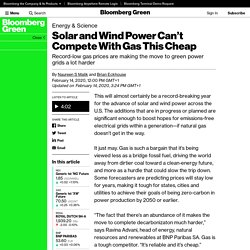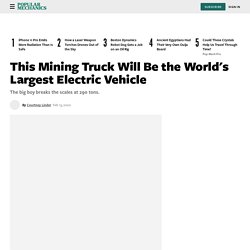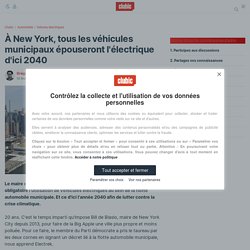

Le GNV peut-il être une alternative au tout électrique pour décarboner les transports ? On compte aujourd’hui 14 000 véhicules roulant au GNV sur le territoire, principalement dans les flottes de véhicules lourds (collectivités et transport routier), contre 19M dans le monde, soit 2% du parc mondial, avec en tête des pays comme l’Iran (3,5M de véhicules), la Chine et le Pakistan.

En Europe, c’est l’Italie qui est le pionnier du GNV, avec 900 000 véhicules sur les 1,2M de l’Europe, occupant le 7ème rang mondial, loin devant l’Allemagne. Au niveau des infrastructures, la situation en France est toute aussi critique (43 stations en 2016), malgré la progression remarquable depuis 2 ans avec l’ouverture de 40 stations en 2017 et 95 en 2018. Cela reste éloigné des 2 000 stations en Italie et en Allemagne. Governments are being 'sold a pup on blue hydrogen from methane’ Another Yukon community lines up for solar power. The community of Beaver Creek, Yukon, could potentially cut its use of diesel-powered generators by 60 per cent, if a new solar project goes ahead.

The White River First Nation plans to build a 1.5 megawatt (MW) solar photovoltaic generation farm with 4 megawatt hours (MWh) of battery energy storage for the Beaver Creek electrical grid. "It is very large, for sure. It's probably going to be one of the dominant features of downtown Beaver Creek for the foreseeable future," said Chris Cowx, general manager of Copper Niisuu Limited Partnership, the First Nation's development corporation. The project proposal was filed in January with the Yukon Environmental and Socio-economic Assessment Board (YESAB). Beaver Creek, a community of about 100 people near the Alaska border, is not connected to Yukon's main electrical grid so it is entirely reliant on diesel power. The First Nation says three diesel generators in the community generate around 1 MW of power. "We have to order all of the equipment. Solar and Wind Power Can’t Compete With Gas This Cheap. This will almost certainly be a record-breaking year for the advance of solar and wind power across the U.S.

The additions that are in progress or planned are significant enough to boost hopes for emissions-free electrical grids within a generation—if natural gas doesn’t get in the way. It just may. Gas is such a bargain that it’s being viewed less as a bridge fossil fuel, driving the world away from dirtier coal toward a clean-energy future, and more as a hurdle that could slow the trip down.
Rendement de la chaîne hydrogène : cas du « Power-to-H2-to-Power » Electric Mining Truck - World's Largest Electric Vehicle. London mining firm Anglo American, with design assistance from Williams Advanced Engineering, will build the world's largest hydrogen-powered mining truck.When finished, the truck will weigh over 290 tons.

Testing will begin later this year in Johannesburg, South Africa. The world's biggest electric vehicle—a 45-ton mining dump truck dubbed the eDumper—may have to cede its throne. A hybrid newcomer, powered with both electricity and a reserve of hydrogen fuel, is on par to steal that title as the largest electric mining truck. The Fuel Cell Electric Vehicle will begin test runs at the Mogalakwena platinum group metals mining operation in South Africa later this year. London-based Anglo American is developing the beast of a machine—it weighs 290 tons, or 580,000 pounds—as part of its sustainable mining vision. Hydrogen fuel, according to the U.S. When you accelerate, the battery powers electric motors inside that allow the wheels to spin and create forward motion. State of The Canadian Electricity Industry 2020 Report - Canadian Electricity Association. Transforming to meet climate, customer and competitive needs Turbines.

Simple yet highly complex assets emblematic of the Canadian electricity system. Used to convert energy into the power that turns the lights on, they go largely unnoticed. And while the system may be invisible to the average consumer, it is in the midst of a transformation as technological, societal and environmental changes compel our electricity companies to create new ways to serve customers, communities and policymakers. Members of the Canadian Electricity Association (CEA) have built upon a strong foundation, as one of the world’s lowest-carbon electricity systems by significantly improving environmental performance over the past two decades.
The current federal government, re-elected in October 2019 with a minority mandate by Canadians, has staked out ambitious policy goals. This is the backdrop against which CEA presents State of the Canadian Electricity Industry 2020. Des véhicules plus autonomes. Discussions on Sustainable Aviation Take Place in Abu Dhabi. In context of ICAO’s annual Fuel Task Group meeting, IRENA hosts discussion on role of biofuels in aviation decarbonisation Between 2013 and 2018 the number of air travellers increased by 38 per cent, and the International Air Transport Authority (IATA) expects annual passenger numbers to double to 8.2 billion by 2037.

While this growth could support up to 100 million jobs over the next 20 years, it will also increase aviation carbon emissions. Finding a solution to the aviation sector’s emissions has become a global priority. In 2009 the global aviation industry set a goal of carbon-neutral growth from 2020 onwards and aims to reduce net aviation carbon emissions by 50 per cent by 2050. However, it has been reported that global CO2 emissions from commercial flights are rising up to 70% faster than predicted. À New York, tous les véhicules municipaux épouseront l'électrique d'ici 2040. Le maire de New York City Bill de Blasio a signé un décret rendant obligatoire l'utilisation de véhicules électriques au sein de la flotte automobile municipale.

Et ce d'ici l'année 2040 afin de lutter contre la crise climatique. 20 ans. C'est le temps imparti qu'impose Bill de Blasio, maire de New York City depuis 2013, pour faire de la Big Apple une ville plus propre et moins polluée. Pour ce faire, le membre du Parti démocrate a pris le taureau par les deux cornes en signant un décret lié à la flotte automobile municipale, nous apprend Electrek.
Camions poubelles, ambulances, bus Ce dernier, qui cite le New York Daily News (indisponible dans nos contrées), nous en apprend davantage à propos de cette nouvelle mesure : d'ici 2040, tous les véhicules liés aux activités de la mairie devront épouser l'électrique.